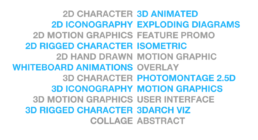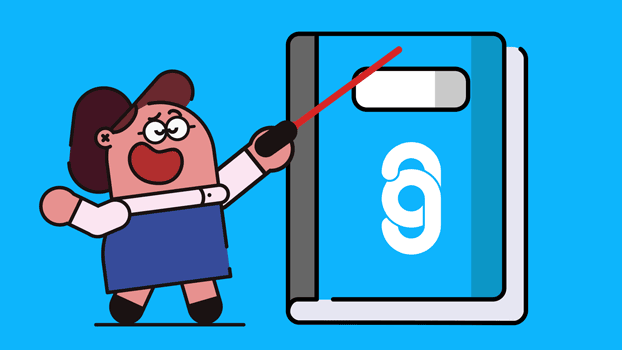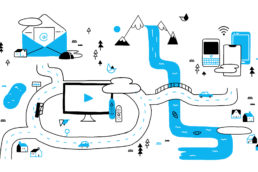The history of animation stretches back far further than you may think. Forget the use of computers and computer generated imagery (CGI), early animation relied on nature and art to bring images to life.
Here we’ll explore the history of animation and find out how it evolved into the incredible art form we know it as today.
Early Beginnings
The Paleolithic era refers to roughly 2.5 million years ago, around 10,000 B.C. and is one of the earliest periods of time in which humans existed. Early humans were hunter-gatherers and lived in caves or tents. They used basic stone and bone tools and stone axes for hunting birds and wild animals. No UberEats here unfortunately.
Humans in the Paleolithic era were actually the unwitting ‘inventors’ of animation. They used to depict various scenes through their cave art. What’s really interesting about these works of art is that many used to include images showing an object in various stages of motion. For example, an animal might be shown with multiple legs to give the impression of running or moving.

Though they didn’t have the means to bring their drawings to life through motion, they certainly had the intention!
We also see some evidence of the history of animation in the Egyptian hieroglyphs that characterised the Egyptians’ communication style about 4,000 years ago. A mural in the tomb of Khnumhotep depicts a wrestling match in action. Whilst the Egyptians couldn’t make the images move through technology, they used art to give a sense of motion.
Moving Forward
Throughout the subsequent years, many works of art from multiple civilisations made reference to the idea of depicting movement. For example, the famous Vitruvian Man drawing by Leonardo da Vinci (circa. 1490) shows a person with multiple body parts that create an illusion of movement.
Before 1000 CE, the Chinese created a rotating lantern called the “trotting horse lamp”. It had silhouettes projected on thin paper sides, which seemed to follow each other, as though in a horse race. The cut-out silhouettes were attached inside the lantern and moved thanks to heated air rising from a lamp. This idea of using heat to create motion was one of the earliest forms of animation.
Another Chinese art form that served as a base for the history of animation was shadow play or shadow puppetry. According to the Travel China Guide, the story of how shadow puppetry came to be is as follows:
“More than 2,000 years ago, a favorite concubine of Wu Emperor of the Han Dynasty died of illness; the emperor missed her so much that he lost his desire to reign. One day, a minister happened to see children playing with dolls where the shadows on the floor were vivid. Inspired by this scene, the smart minister hit upon an idea. He made a cotton puppet of the concubine and painted it. As night fell, he invited the emperor to watch a rear-illuminated puppet show behind a curtain. The emperor was delighted and took to it from then on. This story recorded in the official history book is believed to be the origin of shadow puppetry.”
Flipbook
One of the most well known and accessible forms of animation is the flipbook, or kineograph. In 1868, John Barnes Linnett patented the flipbook but most people have had a go at creating their own during childhood.
To create a flipbook, one draws a series of images – a picture per page – that follow a similar pattern. Each image is slightly different to the previous one. For example, you might decide to draw an image of a fish underneath the water. On each page, you’ll draw the fish closer to the surface until finally the image of the fish is drawn above the water. Once you’re finished drawing, you simply flip through the book at pace. This simple act creates an illusion of motion and your fish appears to swim up and break the surface of the water in one seamless movement.

This is akin to the motion of animation, so is one of the most well-known ways to replicate animation without the need for fancy equipment or technical expertise!
Thaumatrope
Another very simple but effective form of early animation was the thaumatrope. Anyone can make a thaumatrope – all it requires is a piece of string and a bit of thick paper or card. Drawing an image on one side, one then draws another element of the image on the other side.
For example, you might draw a car on one side and a road on the other. As you spin the string, it causes the card to move and the elements work together to create an illusion of related movement. So, in the example of a car and road, upon spinning the string, it’ll seem as though your car is driving along the road.
Recent Animation

Animation has really come to life through the birth and evolution of computers. Computer generated images (CGI) have become so advanced in recent years that animation has taken on an entirely more realistic form than its primal predecessors. Now the debate for animation rages between the more simplistic, but entirely effective medium of 2D animation and the more complex but powerful form of 3D animation. From computer games to explainer videos and blockbuster films, animation is more advanced and impressive than ever before.
Animation in Video Marketing

In the world, today animation plays a vital role in the form of video marketing with It no secret that video marketing is one of the fastest-growing advertising trends on earth. The reason is simple – people are more engaged online than ever.
They want dynamic content that delights their senses and creates a connection. At The Animation Guys, we’ve seen a huge upturn in demand for animated videos to support companies’ marketing strategies from social media videos to animated demo videos for use online.
A recent study by SmartInsights suggested that
- 92% of marketers say that video is an important part of their marketing strategy
- People will spend 100 minutes a day watching online videos in 2021
- 88% of marketers say that video marketing provides them with positive ROI
- 66% of US teens watch online videos every day
The message is clear – video is a worthwhile investment for now and well into the future. And animation will no doubt continue to advance and delight viewers in its many forms.

Summing Things Up!

As is clear from our exploration into the history of animation, there are many different types of animation that have their roots way back in our earliest civilisations.
For example, stop-motion is still a very popular animation style that gives an authentic feel to any film. It’s possible for anyone to create a stop-motion film, so if your budget is tight but you want to create a video that will appeal to your audience. There’s no reason you can’t create your own simple stop-motion or borrow one of the animation styles of previous eras.
However, if you want to invest in video marketing with a focus on achieving conversion, user engagement and a robust ROI from your investment, it’s worth working with a professional animation company such as ourselves!
Learn more
At The Animation Guys, we provide a reliable solution for companies looking to communicate with their audience through thoughtful video production and effective storytelling. We love stories… in all their different shapes and sizes. The big ones, the little ones and those hidden ones that can only be found if you use your imagination.
With tonnes of collective experience in animation and motion graphics, we help brands, agencies and production companies tell the stories the world needs to hear.
To be part of the future of animation get in touch with our team to discuss your goals and how you can use animation to achieve them. Don’t forget to check out our portfolio to see more examples of our work in action!
Share this bite
The Animation Video Workbook

The 1-stop shop for everything you need to know about making the most awesome video possible



